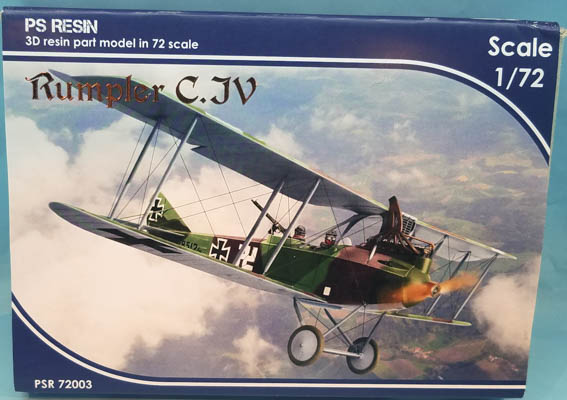
Print Scale 1/72 Rumpler C.IV
By Matt Bittner
Introduction
The Rumpler C.IV was a true work horse of the German WWI air force, flying reconaissance duties from April 1917 until the end of the war. It was a handful to fly, though; the pilot definitely had to keep on top of flying it and not let it get into a stall. But it still was the most produced C-type of the war and was used constantly and consistently. It was also licensed-built by two other companies, Pfalz (whom produced mostly training C.IVs) and Beyerische Rumpler Werke for a total of about 700 C.IVs produced.
The Kit
This is Print Scale's first foray into a complete 3D printed kit; in the past (and lately) they have produced 3D printed detail/conversion pieces, but not a full kit until the Rumpler. Their Rumpler C.IV contains a lot of parts. It's difficult to tell, without looking in closer, where the 3D "towers" end and the parts begin, and I don't want to remove parts until I'm closer to starting the model. There are markings for nine Rumpler C.IVs:
- Wr.Nr.1431/17, 1917, in French markings (Green, Azure and Green Sky camouflage)
- Wr.Nr.1454/17, 1917 (Green, Azure and Green Sky camouflage)
- Wr.Nr.6709/16, 1917 (three color camouflage)
- Rubuild IIIb, Wr.Nr.8186/17, (Green, Azure and Green Sky and printed-lozenge camouflage)
- Wr.Nr.8444/16, 1917 (three color camouflage)
- Wr.Nr.8512/16. 1917 (three color camouflage)
- Wr.Nr.8012/17, 1918 (Green, Azure and Green Sky camouflage)
- Wr.Nr.8288/17, 1918 (Green, Azure and Green Sky camouflage)
- MFG 1 or 2, Belgium, August 1917 (Green, Azure and Green Sky camouflage)
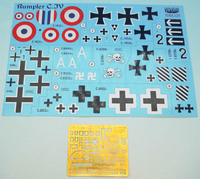
|
The undersides of most of the above aircraft is primarily in Pale Blue. The Rubuild machine also has printed-lozenge fabric on both wings' underside, which is not included. The decals look nicely printed and I can see no registration issues. There are definitely unique schemes Print Scale provides.
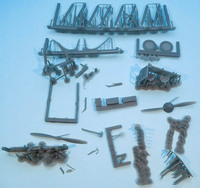
|
Right up front I will tell you the instructions Print Scale includes with the kit leave a lot to be desired. All they show are CAD-type images of the completed model, starting with the completed cockpit. The instructions do not list any part numbers, nor where the parts would go on the model, even though there are part numbers on some of the printed runners. Plus, you'll want to go to their site if you picked up an early version of their kit, because the instructions included with mine do not show the placement of the photoetch parts; however, the instructions you can download off the Print Scale site do. So, in my opinion - aside from not knowing where all the parts will go regardless - your best bet is to have reference material handy, especially what Wingnut Wings provides for their 1/32 kit, both "Early" and "Late". For example, one thing the Wingnut Wings' kit instructions show is the interior of fuselage, around the cockpit, was Clear Doped Linen, and not printed-lozenge like the Print Scale instructions state.
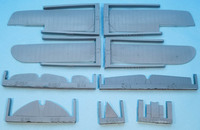
|
Unfortunately I won't be able to go into detail on how the instructions show construction of this model because that doesn't exist. I will state that some of the 3D printed parts became separated from their "sprue" and are broken; in addition, one of my lower wings was printed too-thin and totally unuseable. I will definitely contact Print Scale and hope for a replacement. I don't think that's a problem in all the boxings, I just know sometimes these things happen with 3D printing.
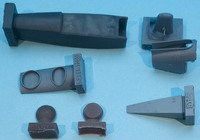
|
Since I mentioned "Early" and "Late" in regards to the Wingnut Wings releases, let it be known that Print Scale does include both noses so you can make an early version with a spinner, or a late version with a more rounded, spinner-less nose. Plus it appears they only have the Mercedes engine and not the Maybach. An important note about the Mercedes-installation into the Rumpler C.IV: the engine was canted to the right so it could clear the center struts, and it was noticeable.
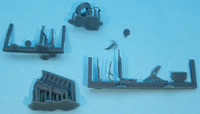
|
Conclusion
The best bet when working on this model is to have the Wingnut Wings instructions as a reference. They should help figure out where the parts should go to finish the model. The 3D printed parts are to a very high quality and I can find zero print-lines/dithering. Not all 3D printed kits can claim that. I'm definitely looking forward to putting this kit together.
Huge thanks to Print Scale for the review kit.
